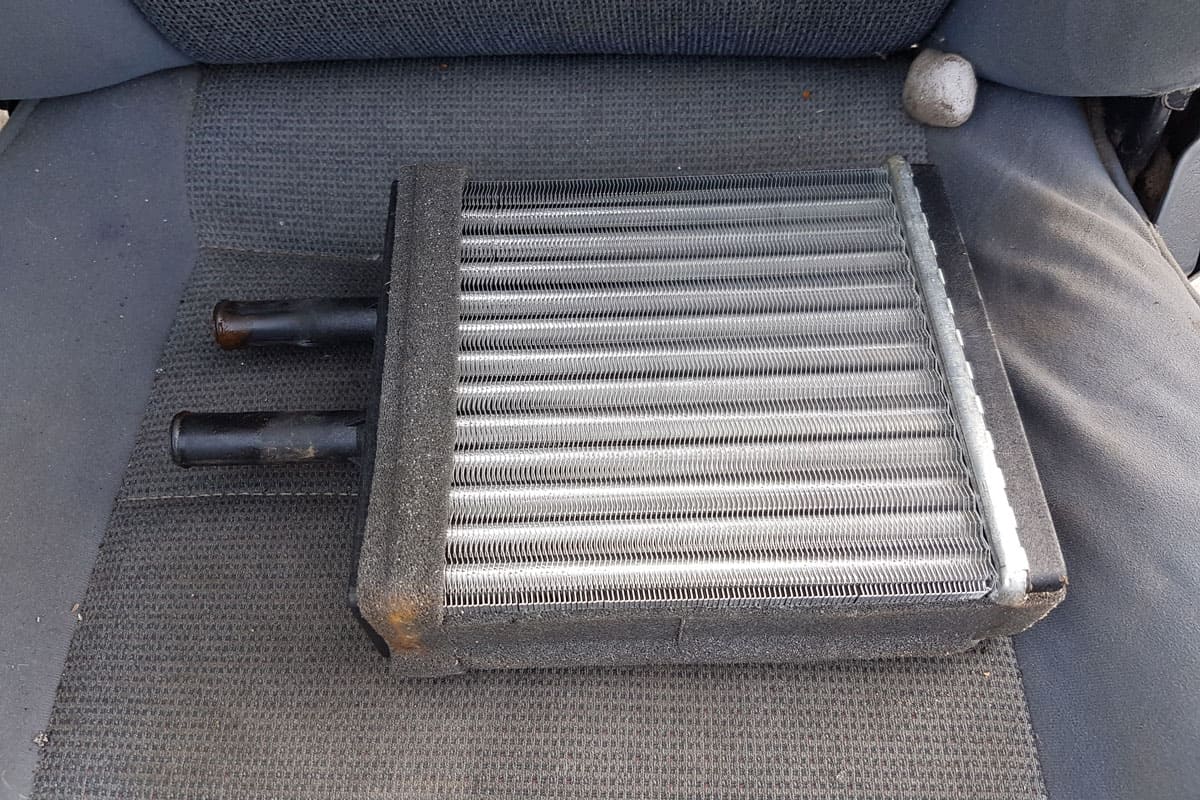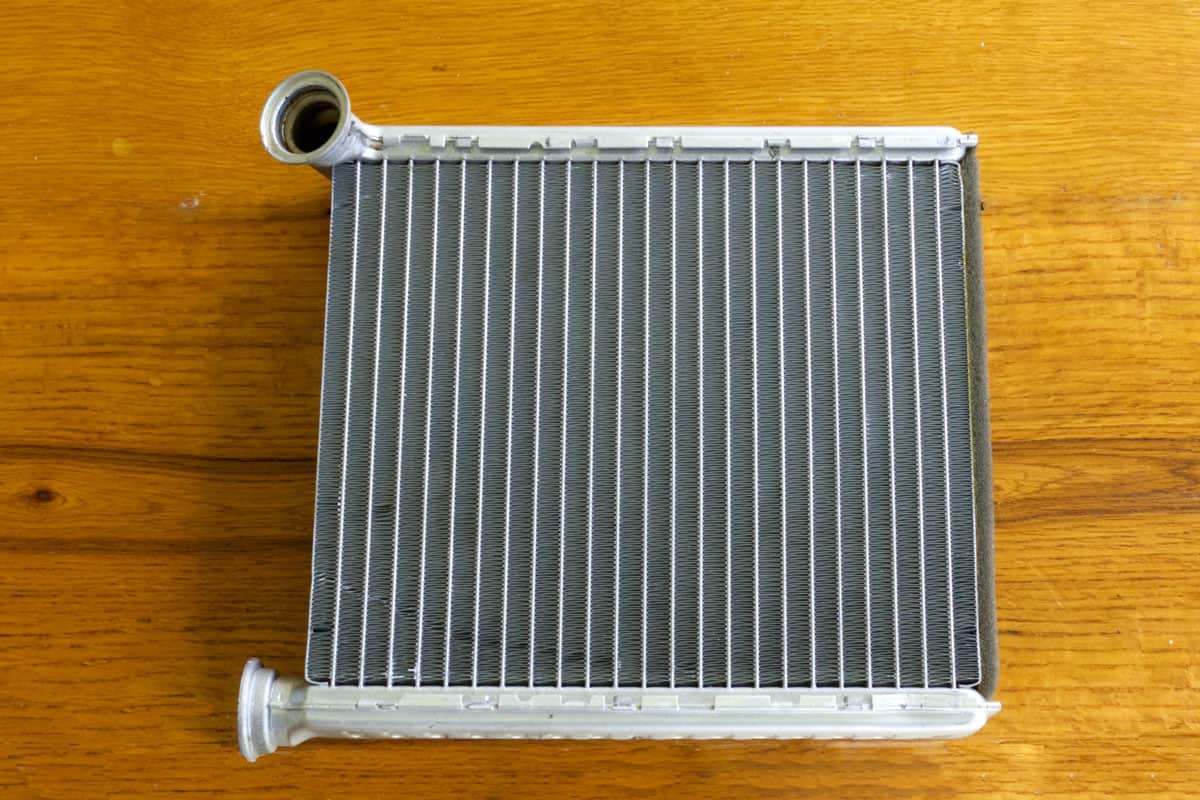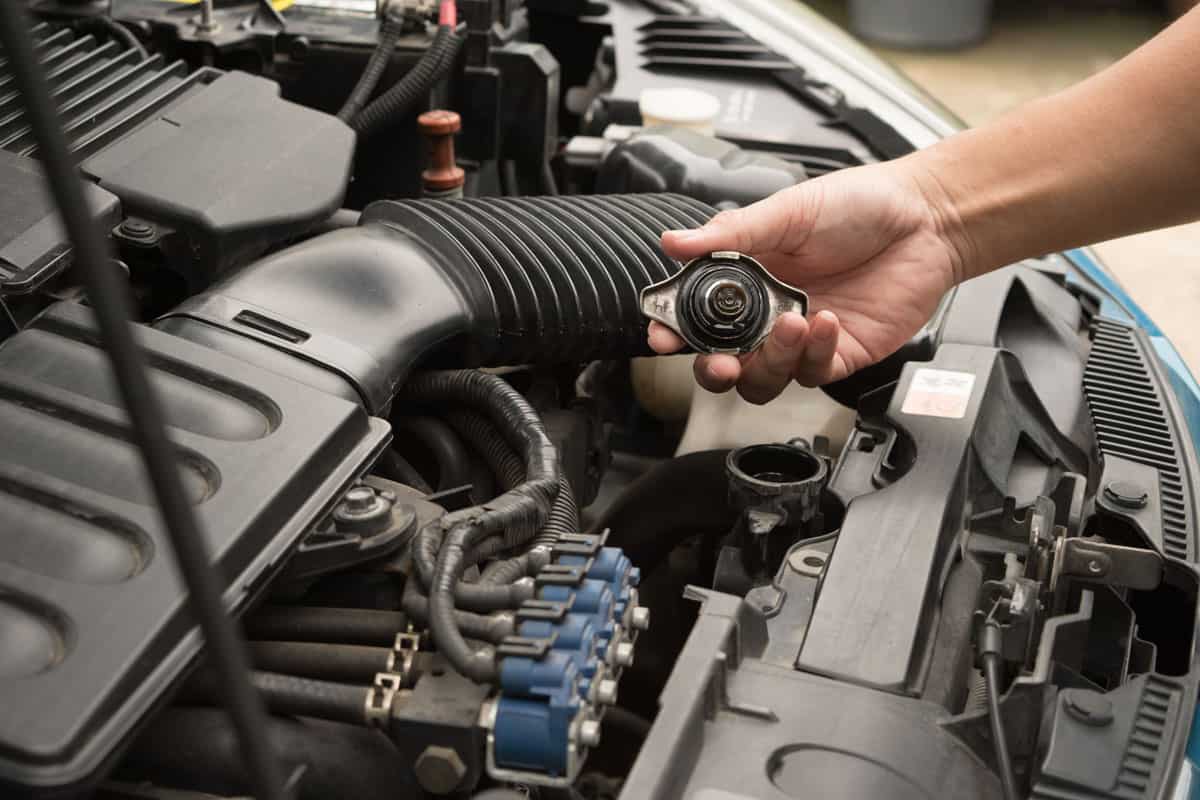Are you planning to bypass your heater core because of a coolant leak inside the cabin? Do you want to know how to block off the heater core hoses? You’ve come to the right place, for we have researched this question, and we have the answer for you.
Here is a summary of the steps that you can take to block off the heater core.
- Drain the coolant in your car.
- Trace the two coolant lines that go to the heater core.
- Cut the coolant lines.
- Connect the two coolant hoses on the heater's core side with an elbow hose.
- Connect the two coolant hoses on the engine side with an elbow hose.
- Refill your car with fresh coolant.
Let’s talk more about the heater core in the succeeding sections. Learn about the complete steps to block off the heater core hoses in the sections below.
Read on!
![check car yourself water radiator hot need coolant refill, How To Block Off Heater Hoses [Step By Step Guide]](https://vehq.com/wp-content/uploads/2022/11/How-To-Block-Off-Heater-Hoses-Step-By-Step-Guide.png)
How does the heater core work?
The heater core is what gives your climate control system the ability to produce warm air during the cold months of the year. It uses the coolant that just exited the engine (which is very hot) to spread heat on its fins.
A blower pushes air through the fins of the heater core, and the air absorbs the heat from the fins as it exits. The warm air enters the cabin and warms it.

Why bypass the heater core?
There are some popular reasons to bypass the heater core. Here are some of the most common ones.
Tropical States
Unfortunately, the heater core doesn’t have any use in tropical states like Florida or California. It might make some sense to bypass it to make the cooling system more efficient because the coolant will travel a shorter distance. The water pump will become more effective in pushing the coolant through the channels of the engine since there is less volume of coolant to push.
Moreover, you will need slightly less coolant since you don’t need to fill the heater core and the heater hoses with coolant too.
Heater Leak
If there is a fruity smell inside the cabin or visible coolant dripping under the dash, that means the heater core is leaking. If you need time to fix the leaking heater core, then bypassing the heater core might be a good temporary solution. This will help prevent losing coolant all over your car’s interior.
Weight Reduction
Performance cars reduce weight to maximize the engine's power that goes to producing speed. Some tuners remove their AC system to reduce weight and load on the engine.
If the AC system is already removed, it only makes more sense to remove the heater core as well.
How to block off the heater hoses?

The first step to bypass the heater core is to reroute the coolant hoses that bring coolant to the heater core. Instead of letting the cooling system bring coolant into the heater core, you can bypass the hoses so that the coolant will go on that same route but bypass the heater core.
After you bypass the heater core, you can later set aside time to remove the old heater core. Then you can decide whether to replace the old heater core or leave it off.
In either case, the sections below provide you with the complete steps to block off and bypass the heater core hoses.
Preparing Your Car
It is always important to prepare your car for any modification or repair project. This ensures that your project will go smoothly and reduce the chances of accidents happening while you work on your car.
- Park your car on level ground with enough light.
- Activate the parking brakes.
- Place your car's transmission in "Park(P)" if it has an automatic transmission. Place it on first gear if it has a manual transmission.
- Let your car cool down for several hours. This is important because the coolant inside the engine is under high pressure when it is hot. It is best if you let your car cool overnight.
- Once the engine is cool, position your floor jack under the front jacking point of your car.
- Jack your car up on its jacking points.
- Once your car is at the right height that you can get under it, place jack stands on the jacking points.
- Jack up the opposite front tire and place a jack stand there as well.
- Lower the floor jack and then raise it once more until it is just barely touching the jacking point. This will serve as a backup in case the jack stands fail.
- Give your car a tug to test the stability of the jack stands.
BIG RED Torin Steel jack stands are available on Amazon through this link.
Draining The Coolant

- Wear gloves and eye protection before proceeding.
- Place a drain pan under your radiator.
- Slide under your car and locate the drain valve on the radiator.
- Open the drain valve slowly, adjusting the position of the drain pan accordingly.
- Let the radiator drain completely.
A drain pan from Capri Tools is available on Amazon through this link.
Locating The Heater Hoses
- Look for two black hoses that come from the firewall. They are normally an inch in diameter.
-
- The inlet heater hose travels along the top of the engine. It will normally be lower than the outlet heater hose, so it can push air out more easily as it enters the heater core.
- The outlet heater hose exits the firewall around the same area as the inlet heater hose but travels down to the engine's water pump. It will normally come from a higher point than the inlet heater hose.
- Once you locate the two heater hoses, look for the best location to block the hoses for the heater core. The ideal location is near one of the supports holding the hoses. This ensures that the heater hoses will not dangle or vibrate too much once you block them.
Blocking The Heater Hoses
- Cut the heater hoses close to the support.
- Insert a coolant hose connector into the two ends of the hoses that are going to the engine—the inlet heater hose and the outlet heater hose.
-
- Some car models use a different hose diameter for the inlet heater hose and the outlet heater hose. If this is the case with your car, use an adapter for the smaller hose so that it will have a diameter to match the larger hose.
- Insert two hose clamps into the inlet hose going to the engine.
- Use an elbow hose to connect the inlet hose going to the engine and the outlet hose going to the water pump.
- Position the first hose clamp where the hose connector enters the inlet hose that goes to the engine.
- Position the second hose clamp where the hose connector or adapter enters the outlet hose that goes to the water pump.
- Tighten the hose clamps.
ICT Billet 1-inch to 3/4-inch hose barb splice coupler is available on Amazon through this link.
A heater core bypass hose coolant crossover is available on Amazon through this link.
Flushing The Heater Core
- Connect a metal tube to the tip of your air compressor trigger.
- Insert the metal tube into the inlet heater hose that you cut.
- Use a vise grip to hold the metal tube inside the inlet heater hose and seal the hose.
- Push the outlet heater hose so that its opening is right above the drain pan.
- Activate the air compressor to blow air into the heater core. This will push all the remaining coolant inside the heater core out. The coolant will exit the outlet heater hose and into the drain pan.
- Wait until no more coolant comes out of the outlet heater hose.
- Remove the vise grip.
- Remove the air compressor hose from the inlet heater hose. You can trim the two heater hoses.
Blocking The Heater Hoses

- Insert a connector into the inlet heater hose.
- Insert a second connector into the outlet heater hose.
-
- If you had to use an adapter to connect the inlet heater hose and the outlet heater hose, then you also need to use an adapter here.
- Insert two hose clamps into the inlet hose.
- Connect an elbow hose to the connector of the inlet heater hose and the outlet heater hose.
-
- Alternatively, you can remove both hoses and instead connect the elbow connector to the inlet and outlet connectors on the heater core. However, this will not make a tight seal if you have different diameters for the inlet and outlet connectors on the heater core.
- Another option is to remove the inlet and outlet heater hoses from the connectors of the heater core. Get a plug to seal the two openings of the heater core.
- Tighten the hose clamps to ensure that there are no leaks in the system.
LOKMAN hose clamp is available on Amazon through this link.
Finishing Up
- Fill your radiator with compatible coolant.
- Start the engine to push air out.
- Refill the coolant as necessary.
- Check the seals and connections for leaks.
Conclusion

Blocking the heater hoses can be done with plugs or an elbow hose. What’s important is to make sure that the cooling system’s coolant hoses are connected to complete the coolant circulation.
If you found this article interesting, why not check the two articles below too:





